Personal Risk Management: Insurance Gaps High Earners Often Miss
The irony of wealth building is that the more you achieve, the more you have to lose—yet many high earners operate with insurance strategies that haven't evolved with their success. If you're like most executives and entrepreneurs, you've probably focused intensely on growing your wealth while treating insurance as something to handle later. That's natural—it's not exactly exciting to think about worst-case scenarios when you're busy building success. But those gaps between your current coverage and your actual needs? They tend to grow right alongside your wealth.
Let's walk through the most common insurance blind spots that catch individuals and families off guard, and more importantly, how to fix them.
Blind Spot #1: Disability Insurance That Doesn't Match Your Income
The Problem: Most people rely on employer-provided disability insurance that caps benefits at $5,000-$10,000 per month—a fraction of what high earners actually need. If you're used to bringing home $30,000 monthly, that group policy might cover your mortgage but won't maintain your family's lifestyle.
Even worse, employer policies often define disability as inability to perform "any occupation," not your specific profession. A surgeon who can no longer operate but could theoretically teach might not qualify for benefits despite losing their primary income source.
What to Do About It: Get individual disability insurance with "own-occupation" coverage that protects your specific ability to work in your profession. This is particularly crucial for specialists—doctors, lawyers, executives, and skilled professionals whose income depends on specific abilities.
You can also consider looking into professional association group plans, which often bridge the gap between employer coverage and individual policies while being more affordable than purely individual coverage. Most importantly, make sure any individual policy is portable—it should travel with you through career changes, while employer benefits disappear when you leave.
Blind Spot #2: Homeowners Insurance Stuck in the Past
The Problem: Your homeowners insurance was probably designed for your first house, not your current assets. Standard policies typically cap jewelry coverage at $1,500, art at $2,500, and other collections at nominal amounts. If you've accumulated significant collections—art, jewelry, or other valuables—these limits pose potential losses.
What to Do About It: Schedule valuable items separately with "agreed value" coverage, which eliminates disputes about worth by establishing values upfront. This prevents the insurance company from arguing about valuation after a loss.And, don’t forget to get regular appraisals to keep coverage current with appreciation.
Blind Spot #3: Liability Coverage That Hasn't Grown With Your Wealth
The Problem: Many individuals and couples carry $500,000-$1 million in umbrella liability coverage—amounts that seemed generous when their net worth was $2 million but feel inadequate now that they're worth $20 million. In today's environment, these amounts can disappear quickly, especially with modern risks like social media liability, employment practices claims, and cyber threats.
What to Do About It: Scale your umbrella coverage to reflect your current net worth, not what made sense years ago. Consider coverage of $5-10 million or more if your assets warrant it. And, make sure your policy addresses today’s risks: social media activities, employment practices (even for household staff), board service, and cybersecurity incidents. If you have international activities, business interests, or properties abroad, also ensure your coverage extends globally as some policies are geography-specific.
Blind Spot #4: Long-Term Care Planning That Ignores Wealth Protection
The Problem: Many high earners either skip long-term care planning entirely ("I can self-insure") or rely on traditional LTC policies that have become expensive and unreliable due to premium increases. Meanwhile, long-term care costs can rapidly deplete assets intended for a surviving spouse or heirs - even substantial wealth.
What to Do About It: Consider hybrid life insurance policies with long-term care benefits. These provide death benefits if you never need care, long-term care benefits if you do, and typically offer more stable premiums than traditional LTC policies.
Focus on the asset protection aspect: Proper planning protects family wealth while ensuring quality care. Remember that qualified LTC premiums are tax-deductible (subject to age-based limits) and benefits are generally tax-free - a rare opportunity for tax-advantaged wealth protection.
Blind Spot #5: Business Insurance That Hasn't Kept Pace
The Problem: If you're a business owner, that key person insurance policy from five years ago probably doesn't reflect your business's current valuation. A $2 million policy might have made sense when your business was worth $5 million, but not now that it's worth $20 million. Similarly, buy-sell agreements often specify outdated valuation methods that no longer reflect reality.
What to Do About It: Regularly update key person coverage to reflect current business valuations, and don't limit coverage to just founders - consider all critical dependencies including key employees, technical experts, and important relationships.
It’s also wise to review and update buy-sell agreement funding to ensure it can actually fund a buyout without creating financial hardship for remaining owners or departing families. Make sure partnership and shareholder agreements coordinate with insurance strategies for smooth ownership transitions.
Blind Spot #6: Executive Liability Exposures
The Problem: High-profile executives face specialized risks that personal insurance doesn't address. Personal cyber threats, employment practices liability, and fiduciary responsibility create exposures that can result in personal financial liability even when you think you're protected by corporate coverage.
What to Do About It: Get Side-A Directors & Officers coverage, which protects when corporate indemnification is unavailable—such as when the company is bankrupt or legally unable to provide protection.
Consider personal cyber liability coverage for threats beyond business contexts such as home network vulnerabilities, smart home risks, identity theft, and social media impersonation. Don't forget about non-profit board service liability, which corporate D&O policies typically don't cover.
Lastly, if you oversee retirement plans as an executive or board member, ensure you have specific fiduciary liability coverage—this specialized exposure requires protection beyond general liability policies.
An Important Distinction When It Comes To Insurance Coverage
Here's the critical point: having insurance isn't the same as having coordinated insurance coverage. Many successful people accumulate various policies over time without ensuring they work together effectively or align with their overall wealth strategy.
The key is having someone who looks at your insurance holistically rather than piece by piece. Regular reviews should coincide with other major financial events—job changes, business growth, real estate purchases, and wealth milestones should all trigger insurance assessments.
That's where we come in. We believe your wealth advisor should act as a catalyst and guide in this process, which is why we work hard to ensure you and your insurance professionals:
Understand your complete financial picture and how insurance fits within it
- Identify coverage gaps across different providers
- Align insurance strategies with your overall wealth plan
- Connect with specialized insurance professionals when needed
Regularly review coverage adequacy as your wealth grows
Don't let success create new vulnerabilities. Connect with your Entrust Wealth Partners advisor for a comprehensive risk assessment to ensure your insurance strategy matches your current reality and integrates with your overall wealth plan.
Not yet working with us? Call us at 860.838.3730 to discuss how proper insurance coordination fits into comprehensive wealth management.
The opinions voiced in this material are for general information only and are not intended to provide specific advice or recommendations for any individual. State insurance laws and insurance underwriting rules may affect available coverage and its costs. Guarantees are based on the claims paying ability of the issuing company. If you need more information or would like personal advice you should consult an insurance professional. You may also visit your state’s insurance department for more information.

